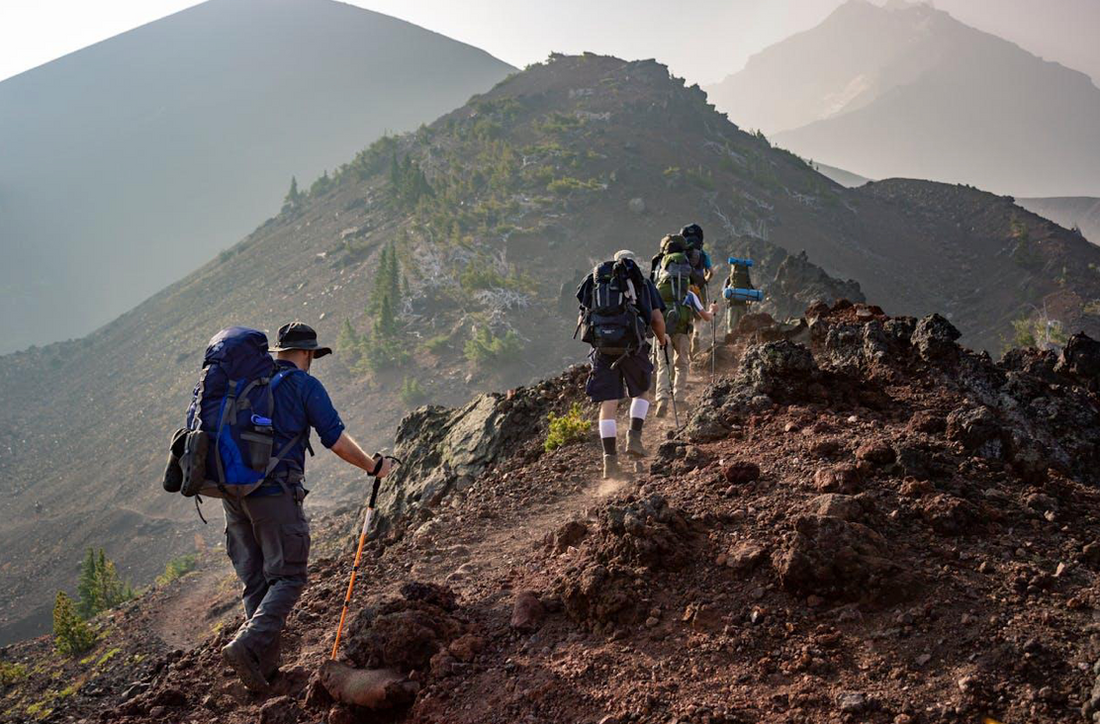Hiking is an enriching and healthy activity. Whether you’re walking a local trail or exploring mountain vistas, it can keep you active and bring you closer to nature. To get the most out of any hike, though, it’s important to make certain you’re not putting yourself at unnecessary safety risks.
Spending time hiking in nature can present dangers that are part and parcel of wild landscapes. While you can’t always entirely avoid these, adopting some sensible best practices can safeguard your well-being.
Check and Prepare for Conditions
Heading out on a hike, whether on trails or in the wilderness, means there will be a lot of factors beyond your control. Among those that can present safety risks are the conditions you’ll experience while there. Though you can’t stop or change the elements, you can perform research that empowers you to make appropriate preparations.
Some of the aspects you should look into include the following.
Weather
Weather conditions can cause serious health and safety risks when hiking. Getting caught in a storm while in the woods may expose you to the dangers of falling tree limbs, debris, and slippery surfaces. If you’re not adequately prepared for hot conditions, you can also experience everything from sunburn to heatstroke, so it’s vital to stay hydrated. It’s best to get a forecast of the weather on the day you plan to hike. You can then dress appropriately and pack essential items. In some instances, extreme weather may mean it’s safer to reschedule.
Air Quality
One of the often overlooked conditions that can affect the safety of hiking is the air in the area. Poor air quality can cause health issues and discomfort. Short-term exposure may irritate your sinuses or your eyes, though dirty air can also exacerbate respiratory illnesses like chronic obstructive pulmonary disease (COPD) or asthma. It is, therefore, vital to check air quality reports before you leave. Look for the current allergens, the potential of smoke from wildfires, and pollution. You can then make informed decisions about whether it’s healthy to hike, if you need to pick a different location, or just have to take medicine along with you.
Keep Assessing Along Your Route
Safety while hiking isn’t usually a fixed issue. Risks will change throughout the day. An essential part of staying protected and healthy is to regularly assess what the current risks are and how you can adjust your behavior accordingly.
This is often as simple as being observant about your surroundings while you’re hiking. While you’re enjoying the beauty of nature, also take a little time to consider how safely you can interact with it. Are the stepping stones you use to cross a stream stable, or are they too slippery for the shoes you’re wearing? Are slopes too steep to navigate easily?
Your assessments shouldn’t just be about the state of features, either. You also need to honestly consider your skill level when it comes to navigating challenging parts of trails. Too many accidents occur because hikers overestimate their own abilities. Consider your experience in overcoming different obstacles. Assess your physical ability, too. Even something as simple as knowing your energy level is valuable.
Not everything about these assessments is based on tangible data. There is scientific evidence to suggest that our gut feelings protect us from potential hazards. This is effectively an evolutionary defense mechanism in which our brains quickly consider a situation compared to past experiences and send signals that alert us to potential danger. These signals might include a sinking feeling, increased heart rate, and butterflies in the stomach, among others. Even when it might appear everything is safe, trusting your instincts when they suggest something isn’t quite right can be a way to minimize unnecessary risks.
Respond to Wildlife Responsibly
One of the wonderful things about hiking in nature is that you get to witness the ebb and flow of local wildlife. It’s equally important to treat these animals in a responsible and respectful way. This isn’t just about maintaining environmental stewardship. It’s also a method of protecting yourself from the safety hazards wildlife interactions can present.
There are some generally accepted safety practices you should adopt when in the wild. This includes not getting too close to animal habitats, as they can be territorial and liable to defend their space if it seems as though you’re an invader. Avoid touching wildlife, too, particularly baby animals whose protective parents may respond aggressively. Unless you’re a trained veterinarian, you shouldn't assist an injured animal who may lash out in distress. Instead, inform a park ranger or similar official.
It’s also smart to do a little research into the specific animal hazards of the area you’ll be hiking in. Some trails or woods might be common spaces for grizzly bears, while others may have venomous snakes migrating or sunbathing at certain times of the year. You may also encounter pests during your hike that you need to be prepared for. Usually, trail managers will post notices on websites or at the entrance of the area to inform hikers about what to look out for. You should familiarize yourself with the correct procedures if you’re confronted with these local animals so that you don’t make mistakes due to a panicked or uninformed reaction.
Conclusion
Keeping safe on a hike isn’t complicated, but it does require some solid best practices. These include taking the time to research and prepare for weather conditions and being mindful of the dangers in your surroundings, among others. Above all else, make sure that somebody knows where you’re going and when you intend to return. This not only provides protection in case of issues but also enables you to enjoy your hike with the knowledge that there are contingencies in place.



